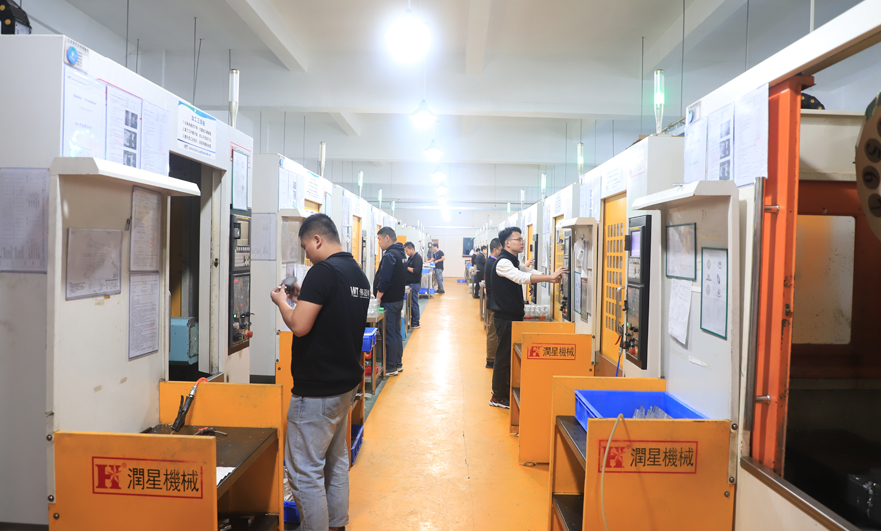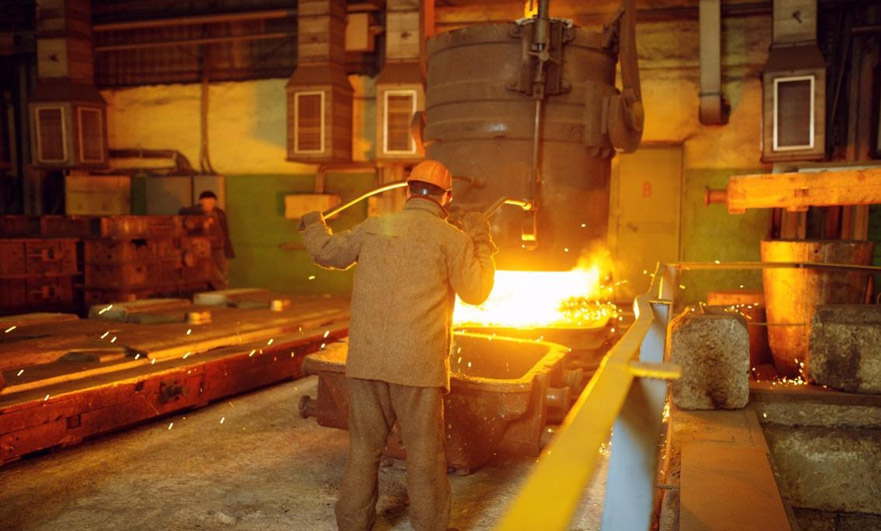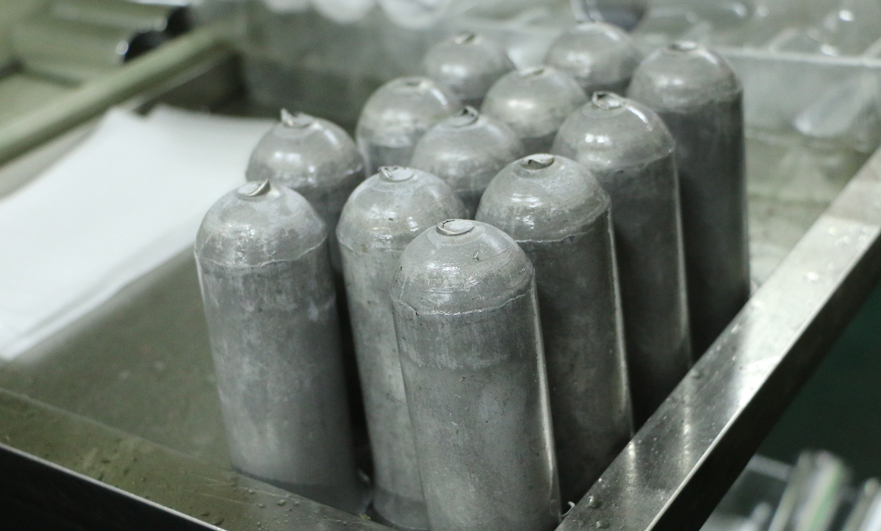15 years one-stop China custom CNC machining parts factory

Hey there I’m VMT Sam!
With 25 years of CNC machining experience we are committed to helping clients overcome 10000 complex part-processing challenges all to contribute to a better life through intelligent manufacturing. Contact us now
 230 |
Published by VMT at Apr 19 2022
230 |
Published by VMT at Apr 19 2022
With the advancement of technology, many revolutionary technologies can be used for metal CNC machining manufacturing. It was not possible in the past to create a product with the desired attributes. Today, engineers and product teams have many options for machining advanced and complex metal CNC machined parts.
Depending on the CNC machined part design and its intended use, there are several effective methods available. But CNC machining and die casting are among the most widely used manufacturing techniques.
But do you know which technique is right for that particular type of CNC machined part? Either CNC machining or die casting. Sometimes, it is necessary to combine the two processing methods. Most of the time, machining with CNC becomes necessary when using die casting to manufacture parts and achieve desired properties in the final product.
CNC stands for Computer Numerical Control. CNC machining is a subtractive manufacturing process in which a piece of material is transformed into a custom designed CNC machined part product. It is done using coded program instructions and different CNC machining machines.
Die casting is a manufacturing process used to create CNC machined products by pouring molten metal or other materials into a mold (mold). The mold consists of cavities of the desired shape. After the molten metal is injected, it is allowed to solidify. It is then ejected from the mold or broken to obtain the final CNC machined part product.
There are many factors to consider when choosing between CNC machining and casting. There are also some similarities and differences between the two processes. Everything you need to know is discussed in detail below. Read on for more details.
CNC machining technology provides high precision CNC machined parts with tight tolerances, excellent machining efficiency and exceptional durability. Since the workpiece is subtracted to obtain the desired CNC machined part shape. As a result, parts manufactured using CNC machining have the same physical properties as their bulk material. It is used in many industries such as aerospace, defense, automotive and other important sectors.

CNC machining technology has virtually no limits. The cost of capital is one of the biggest headaches. This includes buying expensive machines. Sophisticated geometries and material considerations also stand out. Because waste cannot be recycled.
If we talk about difficult CNC machined part designs with internal geometries or steep undercuts, sometimes it becomes difficult to machine due to the complexity involved. However, with an experienced team shop of smart engineers, expert designers and technicians, CNC machined parts of higher complexity can be easily manufactured.
What is Die Casting?
Die casting is a CNC machining manufacturing process used to manufacture geometrically complex parts. A big advantage of using this technique is that once a mold has been created for a specific shape of metal fabrication, it can be used again. Reusing the mold simply requires pouring molten metal into it under very high pressure and allowing it to dry.

Die casting is a cost effective method when we need high volume CNC machining to produce identical parts. Because the mold can be used repeatedly. But using the same mold takes time to wait for it to dry and use it again. Casting has common applications in automotive parts, gears, toys, marine applications, and more.
The limitations of using die casting include that we cannot manufacture large size CNC machined parts. As far as we stay within the capacity limits of the machine, then we can use the casting process. Otherwise, it becomes useless. But with large CNC machining, we can make larger CNC machined parts on demand. Another disadvantage of casting technology is that we are limited to material selection. Because the ductility of metal alloys limits the choice of other materials. But the CNC machining process provides a variety of materials.
What is the Difference Between Die Casting and CNC Machining?
Both of these CNC machining processes are used for metal fabrication. But CNC machining is superior to die casting in many ways. These were discussed in detail earlier. As far as the CNC machining process is concerned, it is an automation technology. It uses a computer to execute CNC instructions. However, die casting involves melting metals or other materials and injecting them into a mold, requiring a long wait for post-cooling to obtain the final CNC machined part product.
Key Factors in Choosing CNC Machining and Die Casting
When considering a specific process for metal fabrication, be it CNC machining or die casting, there are three main factors to focus on. The first is the cost, then the volume and size of the CNC machined part, and the third is the recyclability of the process used.
Consider both machining processes, when mass-producing the same CNC machined part, once the CNC machine is ready to perform a machining action or create a mold. Die casting is preferable. Because a mold made at one time can be used hundreds of thousands of times and is cheaper.
In terms of design modification of CNC machined parts, CNC machining technology is more important than die casting. Changing the design during CNC machining only requires modifying the CAD design and CAM code. Then, even the entire design or minor modifications will be easy to make. Design modifications can also be made during this process. But in die casting, new molds are required for CNC machining part design modifications. This can sometimes be very expensive and can significantly impact the CNC machining costs and deadlines of the entire project.
If recycling and environmental impact are considered, then die casting is a better choice. Because the CNC machining process produces a lot of waste that cannot be recycled. But in die casting, molten metal is poured directly into the mold. This leaves no material behind and becomes eco-friendly.

Factors that Make CNC Machining Better than Die Casting
For many obvious reasons, CNC machining is a more advanced and demanding technology in the field of metal fabrication. Why is CNC machining better than die casting?
No Mold CNC Machining Manufacturing Cost
Manufacturing parts using CNC machining processes does not require the creation of molds. But in die casting, the creation of the mold is mandatory. Without a mold, there is no way to CNC machining. In CNC machining, different tools are used to perform many machining processes. These tools are controlled by digital commands and guided by computers. Therefore, in terms of mold cost savings, CNC machining technology is cost-effective.
Dimensional Accuracy and Stability
Parts manufactured using CNC machining are more dimensionally accurate and stable. This is because the entire process is automated and controlled through CNC machining instructions. Greatly reduced the defect rate. But in die casting, extremely high temperatures are required to melt the metal, which is then poured into a mold under excessive pressure, waiting to cool to solidify the part. All this hassle makes CNC machined parts susceptible to dimensional inaccuracies.
Faster Mass Production
Compared to die casting, CNC machining is a relatively faster CNC machining manufacturing process. Die-cast CNC-machined part manufacturing involves creating a mold, melting the metal, pouring it, waiting for it to cool, and then ejecting or removing the final CNC-machined part from the mold. This is a very time-consuming process. But in CNC machining, you need to generate a CAD design, convert it to CAM code, set up the machine, and then execute the machining action. This doesn't take much time to execute. But it also depends on the complexity of part design in both CNC machining manufacturing techniques.
Once the mold setup and CNC machine setup are in place, tens of thousands of CNC machined parts can be manufactured. But compared to die casting, CNC machining requires less time to mass production.
Complex CNC Machining Part Design Creation
Creating complex part designs is relatively easy in CNC machining technology. In die casting, creating complex designs depends on the creation of a mold. If it is found difficult to CNC machine the mold of the desired shape, die casting cannot produce the CNC machined part. But in CNC machining, creating extremely complex part designs can be difficult, but with a team of CNC machining experts, complex CNC machined parts can be easily created.
In conclusion
It is already clear why CNC machining is preferred for metal fabrication over die casting. Both processing techniques have their own advantages and disadvantages. In some cases, CNC machining technology is more suitable, while in other cases, die casting is more time and cost saving. But it depends on your intended use and the properties you need for the last part. But analyzing the advantages and disadvantages of the above technologies and points, CNC machining is better than casting.
Ready To Start Your Next Project?
Get Instant Quote

Request a Free Quote
Send us a message if you have any questions or request a quote. We will get back to you ASAP!